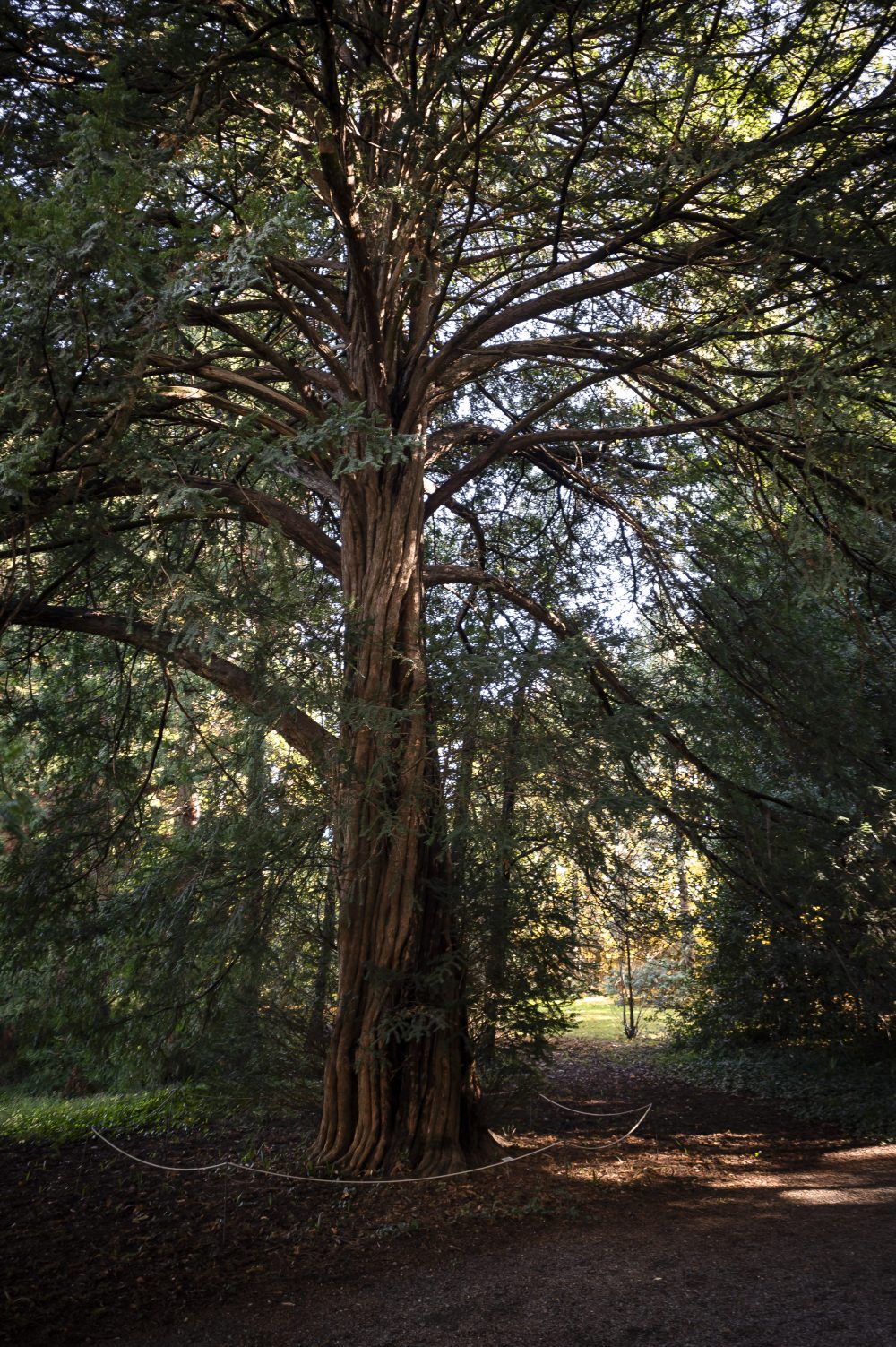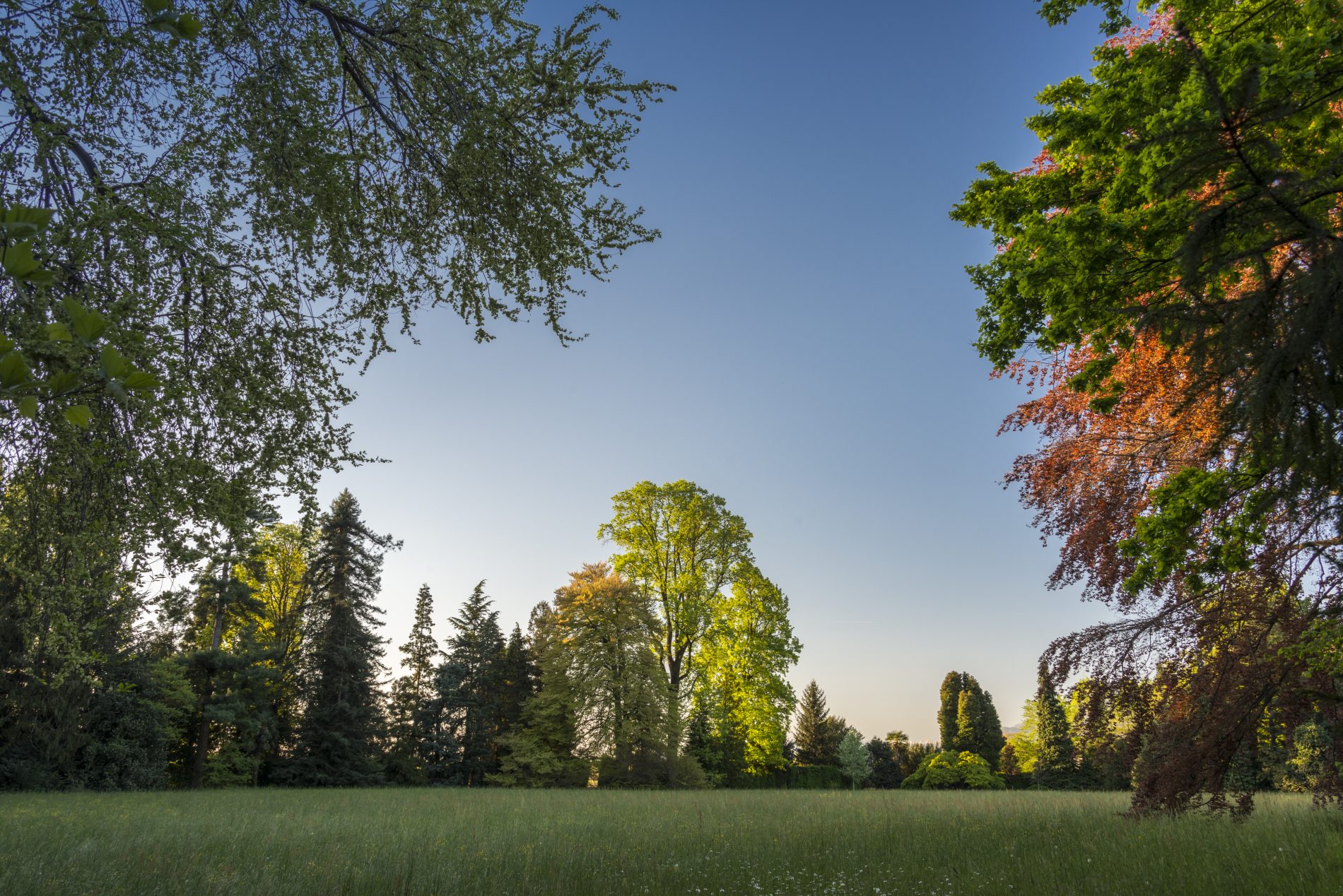The Yew
This magnificent specimen of Taxus baccata is the oldest tree in the park. With its umbrella-like shape and unique intertwining branches, which emerge from the trunk and twist like the ropes of a ship, it is also one of the five monumental trees. The yew is a conifer which can be found throughout most of Europe. It is a species with a very long life and is capable of living up to 2,000 years. In Lancashire, England, there are yew forests that are said to have been planted by the Romans. It originates and thrives on cliffs and mountains, amidst rocks and gravel. The leaves are a rich dark green with a curved shape. In the 19th century it adorned large romantic parks in substantial groups, especially in shaded corners. It was part of the "backdrop" plants, the evergreen framework of "park trees". During the summer season, the crowns of female trees are adorned with small, red, sugary berries called arils, which are highly toxic to humans. These berries, due to their colour, particularly attract blackbirds and thrushes, which help spread the yew seeds, becoming partners in one of the oldest and simplest methods of propagation. In various eras and cultures, this plant symbolized the eternal cycle of death and rebirth. For the Greeks, the yew was sacred to Hecate, the goddess of the underworld. Along with holly, Christianity recognized it as a symbol of eternal life and it was traditionally present in church gardens. The words of the English poet, writer, and botanist Vita Sackville-West seem to capture the mystery and melancholy of this tree, but also its magic: “The yew, that prince, that poet of our trees, who gently follows our moods and twists and leans in fantastical forms, either in a dark or whimsical style, harmonizes with our days. This is the yew, calm, serene, an ancient wise adviser, not casually eloquent but, to those who listen, with much to say; as much as the glades that whisper in a forest, yet clearer and more disciplined than they...”.

This magnificent specimen of Taxus baccata is the oldest tree in the park. With its umbrella-like shape and unique intertwining branches, which emerge from the trunk and twist like the ropes of a ship, it is also one of the five monumental trees. The yew is a conifer which can be found throughout most of Europe. It is a species with a very long life and is capable of living up to 2,000 years. In Lancashire, England, there are yew forests that are said to have been planted by the Romans. It originates and thrives on cliffs and mountains, amidst rocks and gravel. The leaves are a rich dark green with a curved shape. In the 19th century it adorned large romantic parks in substantial groups, especially in shaded corners. It was part of the “backdrop” plants, the evergreen framework of “park trees”. During the summer season, the crowns of female trees are adorned with small, red, sugary berries called arils, which are highly toxic to humans. These berries, due to their colour, particularly attract blackbirds and thrushes, which help spread the yew seeds, becoming partners in one of the oldest and simplest methods of propagation. In various eras and cultures, this plant symbolized the eternal cycle of death and rebirth. For the Greeks, the yew was sacred to Hecate, the goddess of the underworld. Along with holly, Christianity recognized it as a symbol of eternal life and it was traditionally present in church gardens. The words of the English poet, writer, and botanist Vita Sackville-West seem to capture the mystery and melancholy of this tree, but also its magic: “The yew, that prince, that poet of our trees, who gently follows our moods and twists and leans in fantastical forms, either in a dark or whimsical style, harmonizes with our days. This is the yew, calm, serene, an ancient wise adviser, not casually eloquent but, to those who listen, with much to say; as much as the glades that whisper in a forest, yet clearer and more disciplined than they…”.
